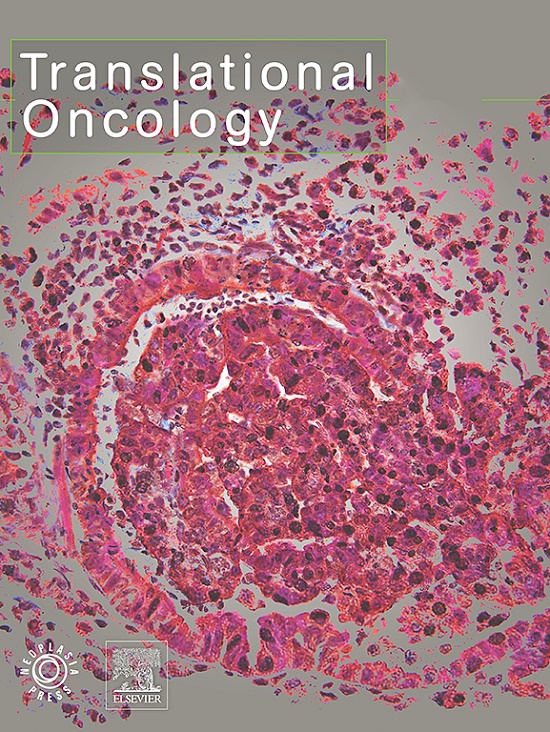内质网应激下 LARP1B 的诱导及其在食管鳞状细胞癌增殖中的调控作用
IF 5
2区 医学
Q2 Medicine
引用次数: 0
摘要
内质网应激(ER应激)是细胞对错误折叠和未折叠蛋白质的积累以及ER腔中的钙失衡做出的一系列反应。越来越多的证据表明,ER 应激对细胞的存活、死亡和增殖至关重要。然而,这一过程的确切过程仍然模糊不清,尤其是在食管鳞状细胞癌(ESCC)中。本研究通过RNA测序发现,LARP1B是ER应激ESCC细胞模型中具有显著差异表达的基因之一。暴露于ER应激刺激物(thapsigargin和tunicamycin)的ESCC细胞显示LARP1B的表达水平升高。ER应激通过激活ERN1-XBP1通路启动了LARP1B的表达,XBP1作为转录因子促进了LARP1B的转录。在 ESCC 组织和细胞系中检测到了 LARP1B 的上调。抑制 LARP1B 能有效抑制细胞的生长,阻碍细胞周期的进展。通过检测一些与细胞增殖和细胞周期调控密切相关的基因的表达,发现CCND1是LARP1B诱导细胞增殖的主要因素。作为一种 RNA 结合蛋白,LARP1B 能够附着在 CCND1 mRNA 上,从而增加其稳定性。抑制 CCND1 可部分抵消 LARP1B 过表达对 ESCC 细胞的增殖促进作用。这些研究结果表明,ER应激时,由ERN1-XBP1通路引发的LARP1B上调可通过增强CCND1的mRNA稳定性来促进ESCC细胞的增殖,LARP1B可作为ESCC的潜在治疗靶点。本文章由计算机程序翻译,如有差异,请以英文原文为准。
Induction of LARP1B under endoplasmic reticulum stress and its regulatory role in proliferation of esophageal squamous cell carcinoma
Endoplasmic Reticulum Stress (ER stress) is a series of cellular responses activated in response to misfolded and unfolded protein accumulation and calcium imbalance in the ER lumen. Cumulating evidence emphasized the crucial involvement of ER stress in cell survival, death, and proliferation. However, the precise process remained obscure, especially in esophageal squamous cell carcinoma (ESCC). In the present study, LARP1B was detected to be one of the genes with significant differential expression in the ER stress ESCC cell model by RNA sequencing. ESCC cells exposed to ER stress stimulants (thapsigargin and tunicamycin) showed increased expression levels of LARP1B. ER stress initiated the expression of LARP1B through activation of the ERN1-XBP1 pathway, with XBP1 acting as a transcription factor to boost LARP1B transcription. Up-regulation of LARP1B was detected in ESCC tissues and cell lines. Suppression of LARP1B effectively curtailed the growth of cells and hindered the progression of the cell cycle. By detecting the expression of some genes closely related to proliferation and cell cycle regulation, CCND1 was identified as the main contributor to the cell proliferation induced by LARP1B. As an RNA-binding protein, LARP1B has the capability to attach to CCND1 mRNA, thereby increasing its stability. Inhibiting CCND1 might partially counterbalance the proliferation-promoting impact of LARP1B overexpression on ESCC cells. These findings indicate that, upon ER stress, up-regulation of LARP1B, triggered by ERN1-XBP1 pathway, facilitates proliferation of ESCC cells through enhancing the mRNA stability of CCND1, and LARP1B may be used as a potential therapeutic target of ESCC.
求助全文
通过发布文献求助,成功后即可免费获取论文全文。
去求助
来源期刊

Translational Oncology
ONCOLOGY-
CiteScore
8.40
自引率
2.00%
发文量
314
审稿时长
54 days
期刊介绍:
Translational Oncology publishes the results of novel research investigations which bridge the laboratory and clinical settings including risk assessment, cellular and molecular characterization, prevention, detection, diagnosis and treatment of human cancers with the overall goal of improving the clinical care of oncology patients. Translational Oncology will publish laboratory studies of novel therapeutic interventions as well as clinical trials which evaluate new treatment paradigms for cancer. Peer reviewed manuscript types include Original Reports, Reviews and Editorials.
 求助内容:
求助内容: 应助结果提醒方式:
应助结果提醒方式:


